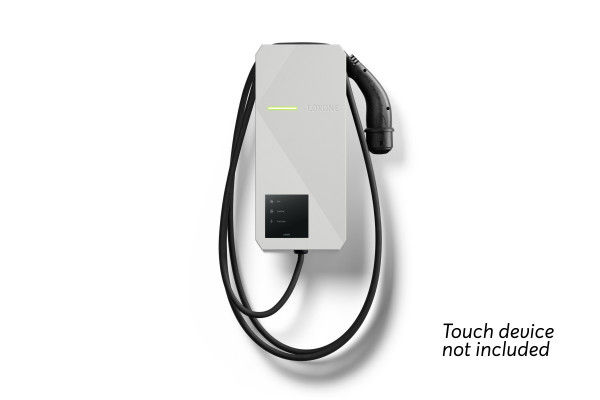E-Mobility - The Future is now
Die Entwicklung der Elektromobilität erfuhr in den letzten Jahren einen rasanten technologischen Fortschritt. Reichweite, verbesserter Komfort und verfügbare Lademöglichkeiten sprechen für sich und erleichtern einen kompromisslosen Umstieg auf Elektrofahrzeuge.

Loxone Wallbox
Die Loxone Wallbox ermöglicht eine vollautomatische Regulierung der Ladeleistung zwischen 1,38 und 11 kW – so tanken Sie wirklich zum Nulltarif! Daneben ist sie dank ihrer modularen Erweiterbarkeit super flexibel und kann einfach um viele Funktionen, wie eine personalisierte Ladefreigabe, erweitert werden.
Die Highlights der Loxone Wallbox:
-
Vollautomatisch regelbar zwischen 1,38 kW und 11 kW für effizientes PV-Überschussladen
-
Integriertes Erweiterungsmodul für NFC Code Touch, Touch Pure Flex oder Touch Pure zur Realisierung zahlreicher Funktionen wie bspw. Freischaltung, Abrechnung, Auswahl verschiedener Lademodi…
-
Zuverlässige und einfache Integration dank Loxone Tree & Air Technologie
-
Integrierte Modbus-Schnittstelle zur Anbindung bspw. eines Energiezählers
Ladestationen mit einer Schuko- oder CEE-Steckdose besitzen einen integrierten Hilfskontakt. Mit diesem wird der Ansteckvorgang erkannt und sicheres Ein- und Ausschalten ermöglicht. Mit einem kombinierten Leitungsschutzschalter mit Fehlerstromauslösung (FI/LS) wird der Ladepunkt abgesichert. Das Elektrofahrzeug wird entweder direkt verbunden (Mode 1) oder mit einem mobilen Ladegerät (genannt ICCB, „in cable control box“) an-geschlossen (Mode 2).

Schuko-/CEE Steckdose (Mode 1, Mode 2)
m Unterschied zu Mode 1 und 2 befindet sich der Ladecontroller und die gesamte Sicherheitseinrichtung in der Ladestation. Die Ladekabeln selbst verfügen über keine zusätzliche Schutz oder Kommunikations-einrichtung. Typische Ladeleistungen sind zwischen 3,7 kW einphasig bis 43 kW dreiphasig. Fahrzeug- und Ladestationshersteller der EU haben sich auf das Ladestecksystem TYP 2 geeinigt, welches standardisiert bei allen am Markt verfügbaren Ladestationen verwendet wird. Neben der TYP 2-Dose kann auch ein fix angeschlagenes TYP 2-Ladekabel zum Einsatz kommen. Das Ladegerät selbst befindet sich im Fahrzeug und bestimmt die maximal mögliche Ladeleistung.
TYP 1 und TYP 2 Steckdosen (Mode 3)

Im Gegensatz zu den AC-Ladeverfahren Mode 1 bis Mode 3 fließt bei CHAdeMO und CCS Gleichstrom von der Ladestation in die Fahrzeugbatterie. Das Ladegerät befindet sich in der Ladestation – deshalb sind Größe und Gewicht nicht durch die Platzverhältnisse im Fahrzeug beschränkt. Die Ladeleistung ist wesentlich höher und ermöglicht eine schnelle und sichere Ladung der Fahrzeugbatterie. Abhängig von der Ladeleistung und der Batteriekapazität kann die Batterie in ca. 8 - 30 Minuten auf mindestens 80 % geladen werden.
CHAdeMO und CCS (Mode 4)

















